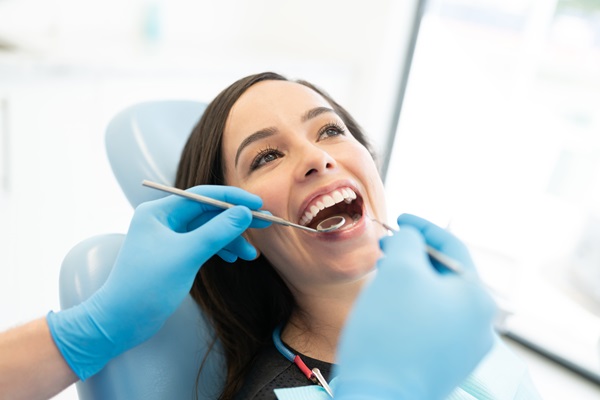What Are Lingual Braces and How Do They Work?

For many, traditional braces can be a significant annoyance, which is why many prefer lingual braces. Although it isn’t typically accurate, many with crooked or crowded teeth refuse to get traditional braces, although they can straighten their teeth and give them a fantastic smile for the rest of their life, because they feel they are too old and fear that it will be too noticeable and embarrassing.
For many, Invisalign is a solution to this, but all too many aren’t able to get Invisalign because their teeth are “too crooked.” However, there is another option. Lingual braces allow people the opportunity to straighten their teeth without noticeable brackets on the front of their teeth.
What are lingual braces?
Lingual braces are a version of traditional metal braces, except they are placed behind the teeth instead of in the front. As a result, lingual braces are a great alternative to individuals who fear traditional metal braces will be too noticeable. Since lingual braces are placed on the back of teeth, individuals can keep their lovely smile while straightening their teeth at the same time.
The process of obtaining lingual braces starts with an orthodontist taking an impression of your teeth, sending it to the lab and having customized brackets made accordingly. After the customized brackets arrive, they are then cemented onto the back of the teeth, and each bracket is placed precisely onto each tooth.
While lingual braces are a fantastic option for many adults, and even teenagers and children on occasion, they aren’t for everyone. For individuals who have a severe overbite, meaning the top row of teeth overlap the bottom row, there is a real concern that they might damage and even break off their brackets when they chew or grind their teeth while sleeping. However, this tends only to be the case with more severe overbites and a good portion of individuals who seek lingual braces can get them.
How do lingual braces work?
Lingual braces work in the same manner that metal braces placed on the front of the teeth work; they help form a perfect arch among the teeth, which in return gives a great smile and fix any malocclusions that may exist. While lingual braces tend to work well and are more or less invisible during social interactions, they do come with their own set of difficulties. The most common complication occurs with problems with the tongue. Since your tongue will continuously be exposed to a metal bracket that it isn’t used to, it certainly takes some getting used to and can cause some tongue soreness at first. Also, eating and chewing may become more difficult at first as well.
Lingual braces, in most cases, tend to work just as well as traditional metal braces. However, they tend to be more expensive, and many orthodontists choose not to offer them altogether. In large part, this is because they are much more difficult to apply and access. Also, the bracket tends not to have a smooth arch as is the case with metal brackets that are placed on the front of the teeth.
The bottom line
With all that said, lingual braces are a fantastic teeth straightening option — but they can take some getting used to. With the help of your dentist and some self-determination to adjust to the new brackets in your mouth, you can be on your way to getting straighter teeth with little hassle in no time.
Request a dental appointment here: http://www.orangecoastortho.com or call Orange Coast Orthodontics at (949) 860-1231 for an appointment in our Laguna Hills dental office.
Check out what others are saying about our services on Yelp: Read our Yelp reviews.
Recent Posts
An orthodontist spends their entire career helping people to feel confident with their smiles, so if you have searched for “orthodontist near me” and are faced with choices about whom to see, you should choose a professional who values your patronage and happiness.Orthodontists focus on how the teeth are aligned and the jaw's position and…
You might not be aware of the cosmetic orthodontic options you have to improve your smile, but cosmetic dental restorations can be used to improve how aligned your teeth look. Some orthodontic treatments also provide cosmetic benefits as they improve the alignment of your teeth.Before going any further, we should clarify the difference between a…
Asking about invisalign for teens® is important. This allows parents like you to know what their teenagers will face during the treatment. This is a more comfortable, discreet way to straighten teeth. Even so, it is important to know what you can about it. If you want to ask your orthodontist about Invisalign for teens,…
Thinking of going for orthodontic treatment but worried about unsightly metal braces? Read on to learn about the advantages of aesthetic braces. For decades, patients had no choice but to straighten their teeth with unsightly braces with metal brackets and wires. This had a tremendous impact on their self-esteem, and many decided to forego braces…


